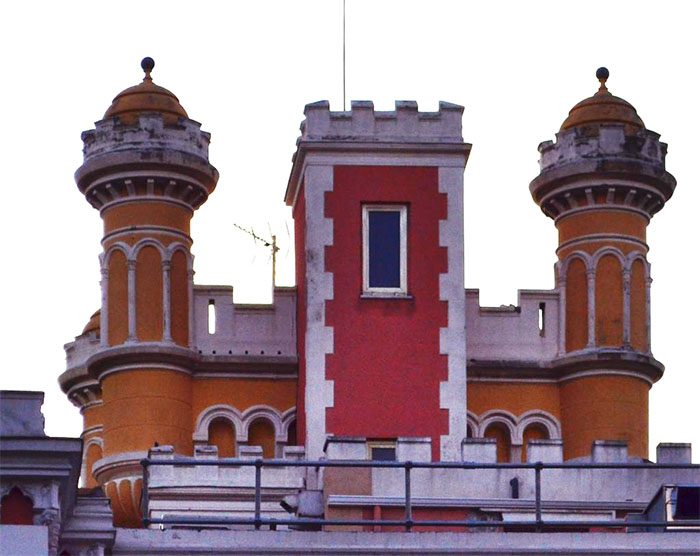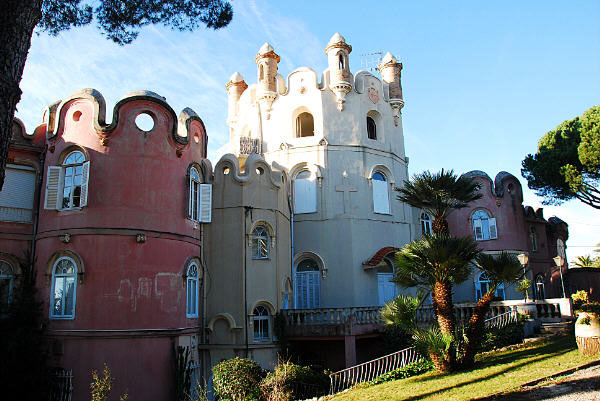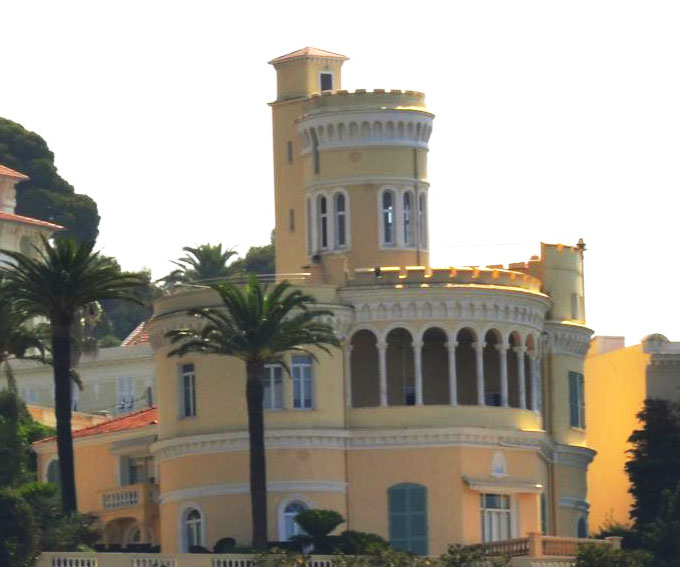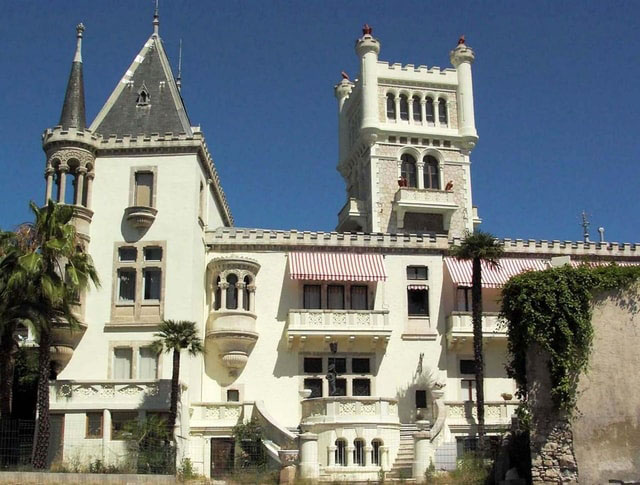Château des Ollières
Download PDFThe Château des Ollières, an astonishing and splendid mansion in Nice (South of France), was built in 1876 by a trader from Lyon, Louis Baudet. Its Troubadour and Moorish architecture is from 1885, when a Russian diplomat purchased it, Prince Lobanov-Rostovsky.
Ambassador of Austria-Hungary for Tzar Alexander II at the time, Alexei Lobanov-Rostovsky was then appointed Minister of Foreign Affairs under the reign of Nicolas II. Progeny of the independent Princes of Rostov, he thought he was also descendant of the mythical King Riourik, who would have ruled during the 9th century. Fond of History, he owned a large art collection, and wanted for the Château des Ollières a style that would evoke the past’s wonders.
Many of his compatriots had settled their holiday houses on the Riviera, since in 1856, the Villefranche bay, nearby Nice, was used by Tzar Alexander II’s navy. Lobanov’s intention might have thus been to follow this enthusiasm of Russian aristocracy towards Nice, but we also know that he had an affair with a French lady, Mme Chevillot, wife of the French ambassador in Constantinople.
Lobanov entrusts the Polish architect Adam Dettloff to transform les Ollières in a “folly”, one of these capricious looking holiday houses. Dettloff keeps some elements of the mansion, two huge Neo-Renaissance stained-glass windows in particular, “Leaving for the Hunt” and its twin. These windows by the prestigious Maison Lorin , ordered in 1882 by a “high civil servant, Mr Usquin”, will perfectly match the Lancet arches of the new project.
Nice already counted several Belle Epoque “follies”, starting with the emblematic Château de l’Anglais, built in 1858, then the Ukrainian Princess Kotschoubey’s house, and the Château de La Tour of Maximilien Budaï. A very fancied architect in Nice, Dettloff took inspiration from these different architectural fantasies, and in accordance with the Prince’s wishes, he created a Troubadour-Gothic style tainted with Moorish influence. One can still see in Nice the Leliwa Mansion, another of Dettloff’s works, that directly inspires from the Château des Ollières.
Renamed Château Elisabeth after World War One, the Château des Ollières is the last Belle Epoque “folly” of Nice that can still be seen in its original aspect.












